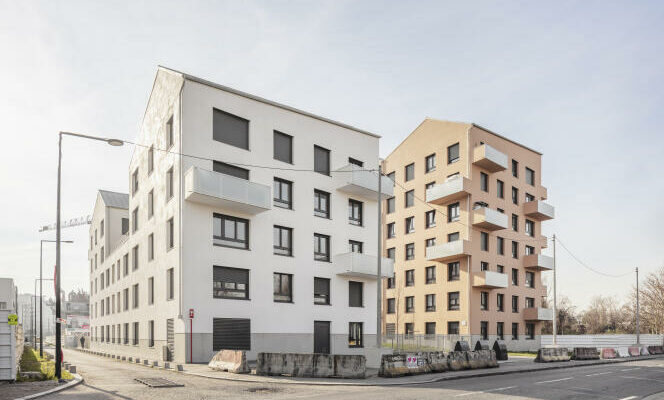At first glance, the two buildings which stand in this concerted development zone (ZAC) of Stains (Seine-Saint-Denis) resemble many other new social housing programs. But it only takes one visit to understand that this is not quite the case. As their name suggests, the Jardins de Stains are surrounded by a vast green space, the layout and maintenance of which the tenants decided during workshops.
There are many small apartments. All benefit from large windows and triple-glazed bays, supplemented with double-flow ventilation, which made it possible to do without radiators and to obtain the demanding Passivhaus label (passive house). Photovoltaic panels produce the electricity needed for the common areas and the heat pump. The water is heated using a gray water recovery system.
All these particularities are the result of a reflection launched by Action Tank Enterprise and poverty, an association created in 2010 by Martin Hirsch, the initiator of the active solidarity income (RSA), and by Emmanuel Faber, then deputy general director of Danone . “We sought to fight poverty by reducing household spending constraints. However, the most important of these expenses is housing, to which the 10% of the poorest devote 42% of their resources”explains Guillaume Ginebre, project manager at Action Tank.
An approach, called “solidarity housing”, was developed with Bouygues Bâtiment Ile-de-France Habitat social. It aims to improve accessibility to social housing and reduce its cost for tenants as much as possible. “Unlike what is usually done, we started from the list of applicants for social housing and, in particular, from the profiles of households with the longest waiting time to define the types of apartments to be created”, explains the director of Action Tank, Jacques Berger. Les Jardins de Stains therefore has more T1 and T2 apartments than the average, in order to accommodate single people and couples without children. And also more housing intended for the poorest and middle-income households.
“The cost savings are there”
Co-design workshops were organized with stakeholders (including social housing applicants), in order to reduce user costs for tenants (rent, rental charges, electricity bills and insurance) without lowering the quality of housing or increase the overall cost, in the long term, for the social landlord, Seine-Saint-Denis Habitat. “There was additional investment during construction, which will save money for years afterwards, both on maintenance and on residents’ energy bills”illustrates Guillaume Ginebre.
You have 45% of this article left to read. The rest is reserved for subscribers.
